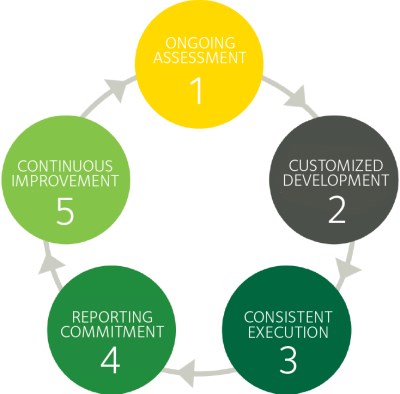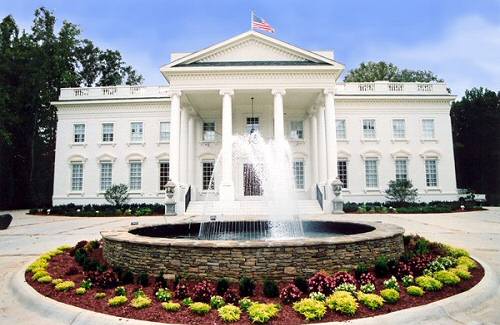A recent article in the Facility Management Magazine: ISSA Today points out that even when you recycle, better options may be available to augment or even replace components of the environmental product cycle.
Paper recycling first became popular in North America and other parts of the world during the late 1970s. And today, many people consider such recycling to be one of the greenest and most sustainable steps consumers, facility managers, building users, and custodial workers can take to protect the environment, save trees, and reduce the amount of material going into landfills.
What many people don't realize, however, is that while paper recycling does have its benefits, to what degree it actually helps the environment is now open to question. It is true that a great deal of the recycled paper collected in the United States is reused by manufacturers for products, including paper towels, toilet paper, and even packaging; However, as much as one-third of recycled paper now goes to China to be used for boxes and other packaging materials as well as in product manufacturing. And to reach China, used paper must first make its way through a long process that consumes a great deal of energy and other resources:
- Waste handlers pick up used paper from U.S. facilities; it is then processed, cut, and bundled for shipping.
- These bundles are then transported, usually by truck or rail, to an American port city.
- The paper is loaded onto ships and sent to China.
- Once in China, the paper is transported, usually by truck or train, to paper mills. The paper is cleaned and de-inked using special chemicals and further processed if necessary.
- It is then shaped and repackaged for transport.
- Finally, the paper is delivered by rail for use in China—or returned to the United States, reversing the entire shipping process.
All this transport and processing consumes a great deal of energy, fuel, and water that generate considerable greenhouse gasses—all to "benefit the environment." Sadly, as can be seen, while recycling does reduce the number of trees harvested for use in paper products, the entire process can have a considerable negative impact on the environment in a variety of ways.
This is why many environmental experts now believe minimizing the amount of trash hauled off to landfills is no longer the key environmental concern. Instead, they believe Issues related to climate change and "carbon sequestration" are far more important to protecting the current environment.
Carbon sequestration refers to minimizing the amount of carbon dioxide (CO2) released into the atmosphere via the burning of carbon-based fuels by absorbing or sequestering it back into the environment. It is a relatively new concept that is becoming increasingly important due to growing concerns that high concentrations of atmospheric CO2 are contributing to global climate change and resulting in the growing number of extreme weather events, such as tornados, hurricanes, severe droughts, blizzards and more. Unfortunately, processing and transporting recycled paper can release unnecessary volumes of CO2 into the atmosphere. This is why many environmentalists now suggest putting less emphasis on paper recycling and more emphasis on using paper products manufactured using "rapidly renewable trees" that are grown and harvested in a sustainable manner.
Did You Know?
- Energy use can account for more than 30 percent of a company's operating budget
- More than 40 percent of municipal solid waste in the United States is paper—about 71.8 tons a year
- Only 22 percent—or 19 million tons—of the 85.5 million tons of paper used annually in the United States is recycled.
Source: University of California- Los Angeles
Renewable Plantations
Older trees serve the planet and the environment in many ways: They protect wildlife; promote the growth of other types of vegetation, including other trees; remove pollutants, including greenhouse gases, from the air; and produce oxygen.
Unfortunately, a large number of the trees harvested in the United States that are used for manufacturing, construction, or paper are oldhave traditionally been growing for decades or, in some cases, even centuries. This holds true in many other parts of the world as well. However, some countries are now focusing on growing rapidly renewable trees as an alternative to harvesting older-growth trees. Rapidly renewable materials must have a harvest cycle of 10 years or less and include materials such as wood from eucalyptus and acasia trees, bamboo, and cork. These rapidly renewable trees are being grown on tree farms—often called plantations—which are monitored by organizations such as the Programme for the Endorsement of Forest Certification (PEFC). Founded in 1999, the PEFC is a nonprofit, nongovernmental, third-party organization dedicated to promoting sustainable forest management systems. Among other efforts, PEFC assesses tree plantations and then verifies that old trees are being protected and rapidly renewable trees are being planted to promote sustainable forestry. (Performing the same function in the United States is the American Tree Farm System, the largest and oldest woodland certification system, which is internationally recognized by the PEFC.)
Young Fibers
Rapidly renewable trees are grown much like other crops, often reaching maturity in as few as six to 10 years. They are grown and harvested in ways that protect forests, the landscape, and other vegetation. When harvested, they are processed to produce "young fibers," which are turned into "young paper products," referring to products manufactured using a higher concentration of fibers from rapidly renewable trees.
Rapidly renewable trees and the fibers they produce are best suited for use in paper and paper-related products. Young trees often have lower-density, shorter fibers, which do not offer the same amount of strength and stiffness as the fibers from older-growth trees. These fibers have an increased potential for shrinkage, which can make them a poor choice for such uses as building construction. Plus, these fibers often are softer and more absorptive than their older counterparts and require less chemicals for whitening.
While they do have their limitations, young fibers harvested from rapidly renewable sources can help reduce our consumption of valuable old-growth trees. And unlike recycling paper, using these materials also saves considerable amounts of fuel, energy, and water. In fact, it is now suggested that focusing on growing more rapidly renewable trees may be equally, if not more beneficial for the environment—promoting both carbon sequestration and sustainability—than paper recycling.
The use of rapidly renewable trees are catching on to the point that already facilities can earn one Leadership in Energy and Environmental Design credit by using rapidly renewable building and construction materials, and their use is also an option for earning a Green Cleaning Products credit as well.
Sustainable Future Products
While recycled and recyclable paper are likely to play a continued role in paper-product manufacturing in the coming years, experts predict that using rapidly renewable sources and sustainable forestry practices will serve an important market segment as well, helping to meet the growing demand for paper products around the world. This change in the marketplace presents an important opportunity for paper manufacturing and processing companies to play a significant role in protecting old-growth trees and promoting carbon sequestration on an international level.
This is why jansan distributors should not be surprised if in the not-too distant-future end customers stop asking what the recycled paper content of their products is and instead want to know how "young" the paper is and if it was sustainably produced.
The Author is Stephen P. Ashkin, President of The Ashkin Group, a consulting firm specializing in greening the cleaning industry, and CEO of Sustainability Dashboard Tools that helps organizations with their sustainability efforts.
Copyright © 2010 by ISSA®
 Sustainability has become an integral component of a commercial property's business plan, contributing to top-line growth, a strengthened reputation, cost control and less exposure to risk by enhancing regulatory compliance.
One thing is for certain, embracing the concept requires a wide-ranging, yet focused, plan of action. Here are six keys for putting an effective sustainability plan in place:
Sustainability has become an integral component of a commercial property's business plan, contributing to top-line growth, a strengthened reputation, cost control and less exposure to risk by enhancing regulatory compliance.
One thing is for certain, embracing the concept requires a wide-ranging, yet focused, plan of action. Here are six keys for putting an effective sustainability plan in place:

